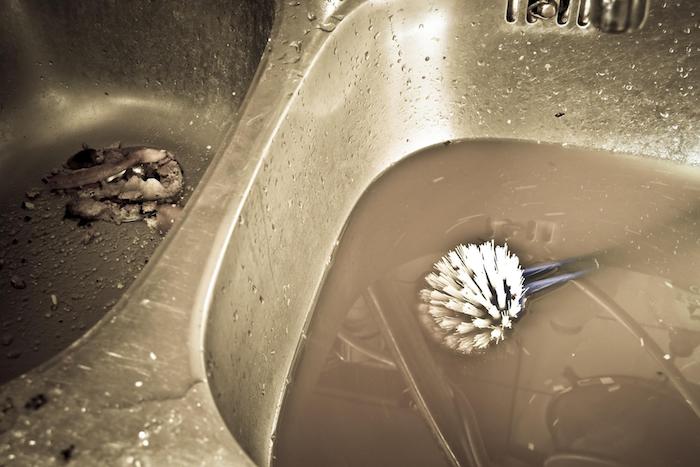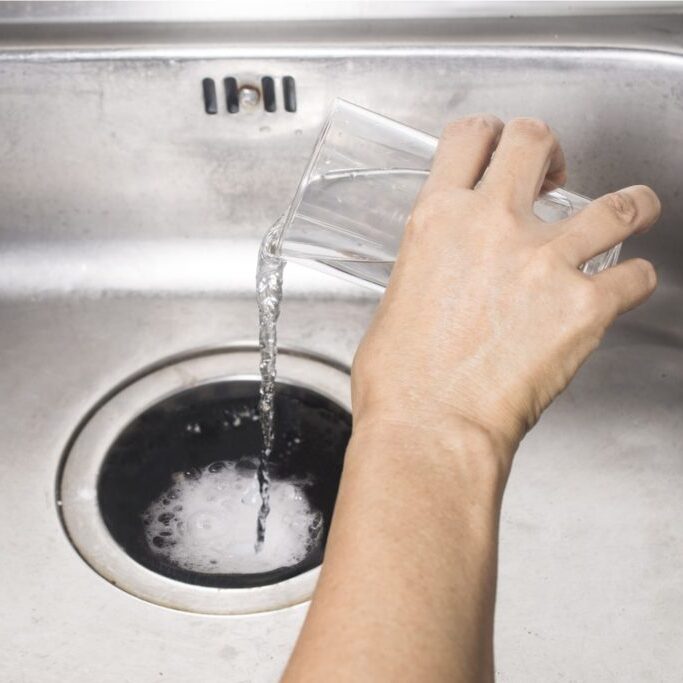Methods To Effortlessly Correct A Slow-Draining Sink
Methods To Effortlessly Correct A Slow-Draining Sink
Blog Article
Right here further down you will discover some very good advice regarding Solved! How to Fix a Slow Sink Drain.

Introduction
We've all been there: You're cleaning your teeth or cleaning your hands, and you see the water merging in the sink. Instead of promptly swirling down the tubes, it remains, turning your once-refreshing morning regimen into a miniature swamp scene. A slow-draining sink isn't simply aggravating; it's commonly an indication of bigger plumbing concerns prowling underneath the surface. The bright side is that many slow-draining sinks can be taken care of with a little knowledge, a couple of basic devices, and some patience. Prepared to tackle this task head-on? Allow's roll up our sleeves and dive right in.
Recognizing the Reasons For a Slow-Draining Sink
Prior to you begin poking around in your pipes, it helps to know what could be triggering the stagnation. Comprehending the source makes it much easier to pick the ideal fix.
Tools and Products You'll Need
The right devices make all the difference. Fortunately, you will not need a fully stocked plumbing's van to finish the job.
Step-by-Step Overview to Repairing a Slow-Draining Sink
Currently, let's enter into the nitty-gritty. This step-by-step procedure will certainly direct you with straightforward strategies to recover your sink's drain.
Step 1: Eliminate and Clean the Stopper
Commonly, the stopper (that little plug you lower to obstruct water) is the initial offender. Remove it very carefully and clean off any kind of hair or crud caught around its base. Wash it thoroughly prior to placing it back in position.
Step 2: Use a Bettor to Remove Particles
Got that bettor ready? Placement it over the drain and give it a couple of firm pumps. The concept is to produce suction that can loosen up any blockage. If you see bits of particles drifting up, you're on the appropriate track.
Action 3: Attempt a Drain Snake or Wire Wall Mount
If the plunger doesn't suffice, it's time to highlight the drainpipe serpent. Gently feed it into the drainpipe and twist as you go. You may feel some resistance-- that's most likely the blockage. Keep turning and pulling until you get rid of the blockage. If you don't have a drainpipe serpent, a straightened cord hanger can operate in a pinch.
Tip 4: Apply a DIY Drainpipe Cleanser
An all-natural cleaner made from baking soda and vinegar can break down recurring gunk. Put half a mug of cooking soda right into the drain, adhered to by half a mug of vinegar. Let it fizz for about 15 mins, after that flush with hot water. This chemical reaction frequently does marvels for minor obstructions.
Step 5: Reassemble and Examine the Sink
Placed every little thing back together and run the tap. Does the water currently swirl down the tubes at a respectable speed? If yes, provide on your own a pat on the back. Otherwise, do not anguish-- there are still a couple of more tricks up your sleeve.
Crucial Tools for Do It Yourself Services
A plunger is your go-to starting point. A small, sink-sized plunger develops suction that can displace minor obstructions. For even more consistent clogs, a drain serpent (in some cases called a plumbing professional's auger) works marvels. A pair of handwear covers, a flashlight, and maybe a set of safety safety glasses are also handy.
Suggested Cleansing Solutions
Light recipe soap and hot water can aid break down oily build-up. A blend of cooking soda and vinegar is a reliable natural home remedy, and enzymatic cleaners supply a more green strategy. Maintain chemical drain cleaners as a last resort, as they can be rough on your pipelines.
Common Wrongdoers Behind Slow Drainage
So, what's clogging points up? Generally, it's a mix of everyday debris-- believe hair, soap residue, toothpaste deposit, and remaining food bits. Over time, these little bits collect and cling to the pipeline wall surfaces, progressively narrowing the passage and making it harder for water to travel through. In many cases, natural resource from difficult water can likewise add to the crud, developing the ideal tornado for stubborn clogs.
When is it Time to Act?
If you discover the water draining pipes slower than typical, it's an excellent idea to interfere quicker rather than later. Waiting too long could bring about complete obstructions, undesirable odors, and even pipeline damages. If the water takes greater than a couple of seconds to clear out after switching off the faucet, consider it a red flag and prepare yourself to put on your DIY hat.
Safety First: Preventative Measures and Prep work
Prior to you launch into unclogging setting, consider security. You're managing potentially filthy water and particles, so slip on a set of handwear covers. If you're utilizing chemical cleansers, make sure the room is well-ventilated and adhere to the guidelines on the tag.
Protective Gear and Office Setup
Set some old towels or cloths around the sink area to capture dashes. Remove any kind of items that may get in your way, like soap dispensers or tooth brush owners. See to it you have good illumination-- order a flashlight if needed.
Alternative Techniques for Stubborn Clogs
Not all clogs are developed equal. If your sink still rejects to work together, take into consideration these alternate remedies.
Baking Soda and Vinegar Technique
We already discussed this, however it deserves noting once again. This gentle, eco-friendly technique is safer than chemical cleaners and typically fairly effective.
Chemical Drainpipe Cleaners
Enzyme-based cleaners use all-natural germs to absorb raw material. They're an exceptional selection if you're wanting to prevent rough chemicals. Just remember, they may take a bit longer to work their magic.
Chemical Drain Cleansers: Pros and Cons
Chemical cleansers can blast via hard blockages quick, but they're not without downsides. They can create heat and fumes, damages pipes if made use of exceedingly, and present environmental risks. Use them moderately, and constantly comply with the instructions thoroughly.
Preventive Measures to Maintain Your Sink Flowing
Avoidance is the very best treatment. By taking on a few basic practices, you can keep your sink from slowing down to begin with.
Regular Cleansing Routines
Wipe down the sink container and fixture location on a regular basis. Remove hair or food fragments before they have an opportunity to wash down the drain.
Avoiding Unsafe Compounds Away
Think twice prior to dumping coffee premises, grease, or coarse vegetable scraps down the sink. These offenders hold on to pipe wall surfaces, creating blockages gradually.
Regular Maintenance Checks
Schedule a quick month-to-month evaluation. Run hot water with the sink for a couple of mins, paying attention to the flow. If it appears slow, act fast before it comes to be a full-on obstruction.
When to Call a Professional Plumbing
Often, regardless of exactly how difficult you try, that block simply won't budge. That's when it's time to bring in the pros.
Signs That Indicate an Extra Significant Problem
If your sink drains gradually in spite of several efforts, or if you see water supporting in various other components (like your shower or bathroom), you may have a much more serious plumbing problem lurking deeper in the system.
Balancing Do It Yourself Initiatives with Professional Help
While do it yourself can save you money and supply a feeling of achievement, there's no embarassment in calling a professional. An expert plumbing can examine your entire plumbing arrangement, guaranteeing there's no underlying damage or lasting problem that could cost you a lot more down the road.
Comparing Prices and Long-Term Solutions
Prior to deciding, take into consideration the big picture. An affordable, quick fix may address the problem briefly, however investing in a much more irreversible remedy can save you money and tension in the long run.
Weighing the Costs of DIY vs. Professional Fixes
Do it yourself solutions often set you back bit more than the cost of a bettor or a bottle of cooking soda. Specialist services, on the other hand, included a price yet might avoid repeated issues and pricey repair work later on.
Buying Top Quality Fixtures and Upgrades
If your sink's design contributes to frequent clogs, it might be worth updating to higher-quality fixtures or modifying the plumbing design. Consider this an investment in your home's capability and convenience.
Verdict
A slow-draining sink can seem like a small irritability, yet it's often a sign that your plumbing requires a little TLC. By comprehending the source, utilizing the right devices and methods, and committing to straightforward safety nets, you can maintain your sink streaming easily. And when all else stops working, never ever hesitate to call in a professional-- your home's plumbing is worth the financial investment in treatment and maintenance.
Three Common Ways to Fix a Slow Drain
Baking Soda Method
Boil a full pot of water. Measure out cup of baking soda and pour it down the drain. Then take cup of the magical cleansing substance known as white vinegar and drop that down there too. Allow the mixture to fizz in the drain for five minutes as the vinegar and baking soda combine. Now dump in that whole pot of boiling water. This combination of cleaning substances should clear out anything that is causing your sink to drain slowly. If it doesn t...
Zip-It
If the baking soda method doesn t clear out your drain, it may be because a significant amount of hair and/or other debris has collected there and you need to remove it. Purchase a Zip-It tool at any home improvement or hardware store and insert it into your drain. It will catch any collected hair or debris that s blocking the flow of water. Pull it out. If it s got a big clump of hair, etc. on the end, you ve probably got your culprit.
Drain Cleaner
If these methods don t work, there is the standard drain cleaner that you can also buy in a hardware store or even your local grocery store. It s better if you can use a household solution, but these drain cleaners often work in a pinch. They re very simple to use. You generally just dump them in your drain and wait. If even this method is not effective, it may be time to call the plumber.
https://www.mrrooter.com/oneida/about-us/blog/2017/july/three-common-ways-to-fix-a-slow-drain/

Hopefully you liked our article on Solved! How to Fix a Slow Sink Drain. Thank you so much for taking the time to browse our posting. Appreciated our content? Please share it. Help others find it. Many thanks for being here. Please come visit our blog back soon.
Book Appointment Now Report this page